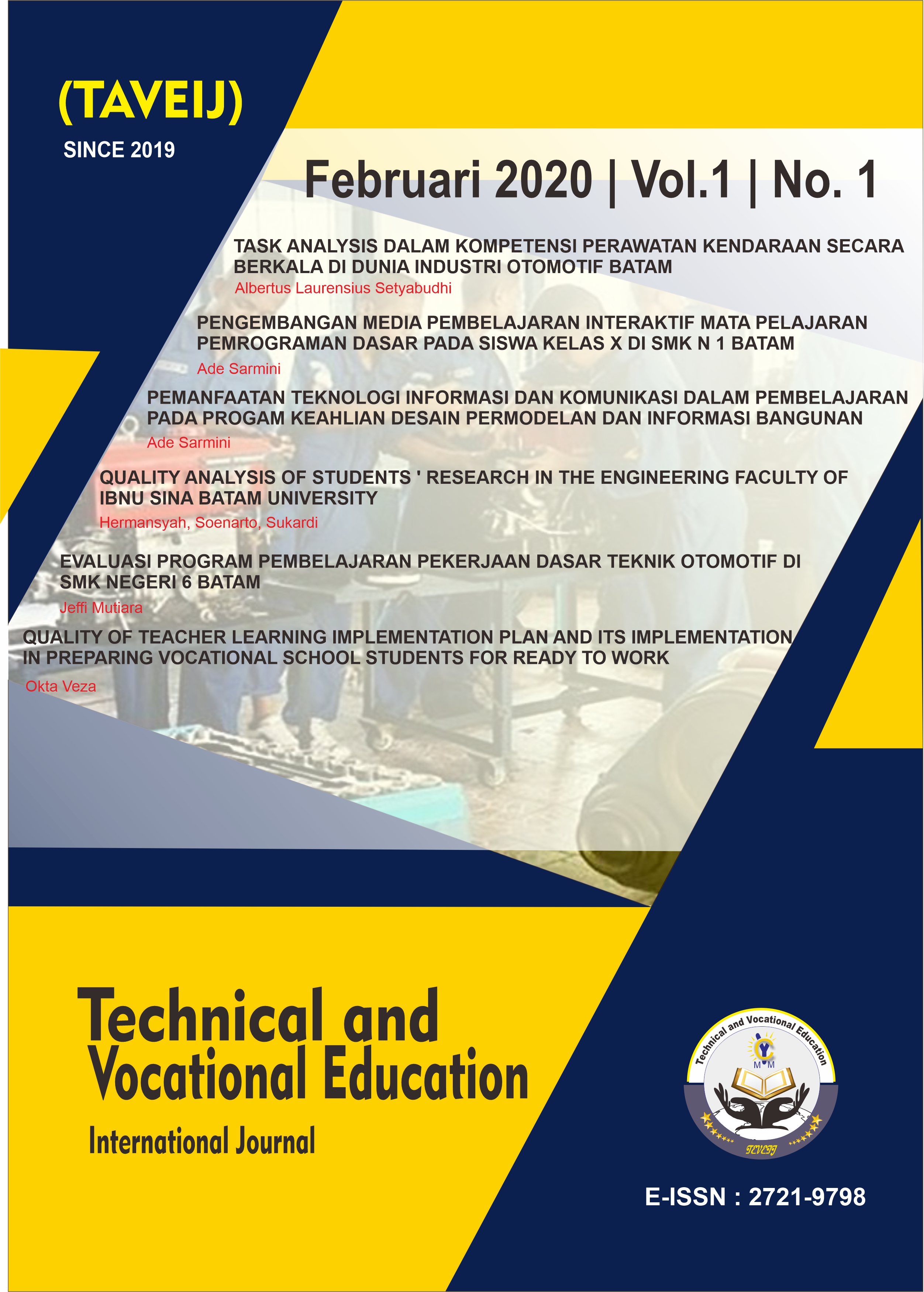EVALUASI PROGRAM PEMBELAJARAN PEKERJAAN DASAR TEKNIK OTOMOTIF DI SMK NEGERI 6 BATAM
Evaluation of the Basic Automotive Engineering Learning Program at SMK Negeri 6 Batam
DOI:
https://doi.org/10.55642/taveij.v1i01.6Keywords:
Evaluation, learning programing, PDTO, CIPPAbstract
This study aims to determine the learning program Basic Automotive Engineering (PDTO) at SMK Negeri 6 Batam which is focused on: context: conformity of learning objectives with the curriculum and delivery of basic competencies; input: teacher qualifications and experience, student motivation, and availability of facilities and infrastructure; process: the use of media and methods by the teacher, the use of learning resources, and the implementation of the learning steps; product: student learning achievement. This research is a descriptive study with a CIPP (context, input, process, product) evaluation research model developed by Stufflebeam. The research subjects consisted of one PDTO teacher and 108 TKRO class X students totaling 108 at SMK Negeri 6 Batam. Data collection techniques with interviews, questionnaires, documentation, and observation. The instrument validation uses expert judgment and product moment correlation test for the questionnaire instrument. Instrument reliability uses the alpha cronbach formula, the student motivation questionnaire r = 0.877; media questionnaire r = 0.768; method questionnaire r = 0.718; and learning resource questionnaire r = 0.896. Data analysis was performed with qualitative and quantitative descriptive analysis. The results of the study revealed that the Automotive Engineering Basic Work learning program at SMK Negeri 6 Batam in terms of: context: the learning objectives of the PDTO learning program are in accordance with the 2013 Revised Edition Curriculum 2013 and not all basic competencies can be conveyed to students; input: PDTO teachers are undergraduate (S1) majoring in Mechanical Engineering Education and have educator certification, student motivation is included in the quite good category with a percentage of 46.296%, facilities and infrastructure in the classrooms is included in the good category with a percentage of 63.634%, and PDTO practice tools are included in the very good category with a percentage of 86.318%; process: the use of instructional media by being included in the category is quite good with a percentage of 35.185%, the use of learning media is included in the category quite well with a percentage of 37.963%, the utilization of learning resources is included in the category quite well with a percentage of 37.963%, and the implementation of the learning steps is in the very category good with a percentage of 100%; product: the percentage of students' mastery learning achievement was 41.667% and 54.630%.



















